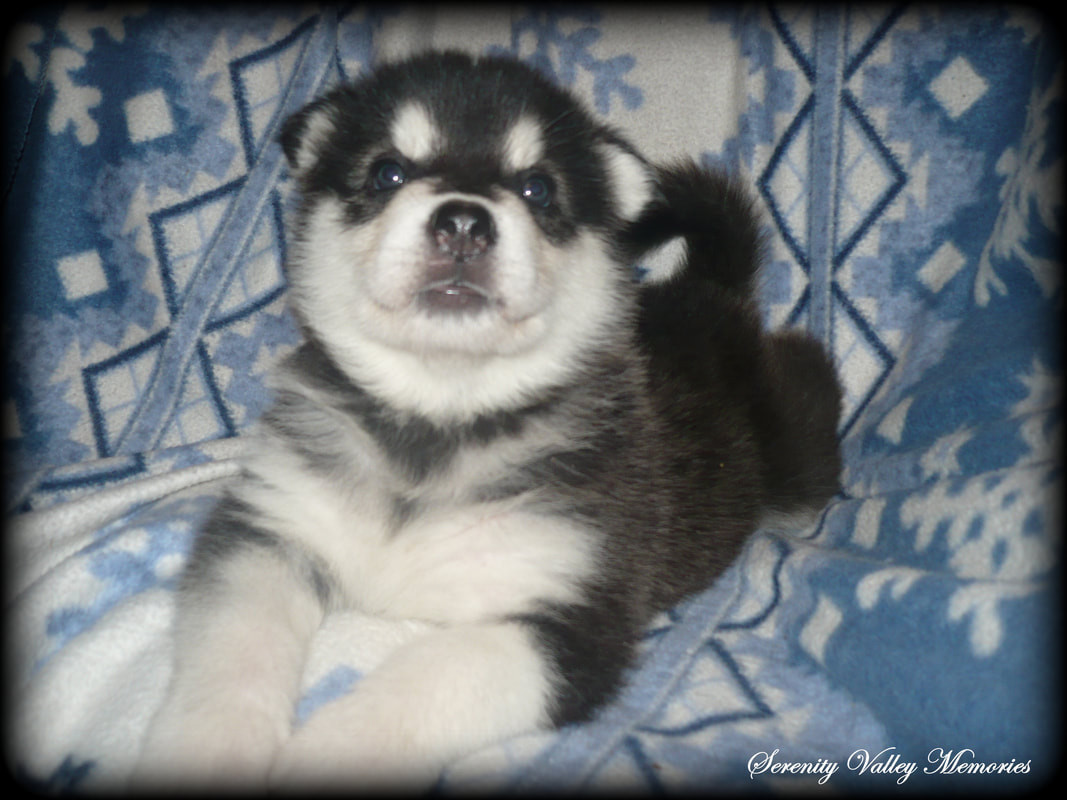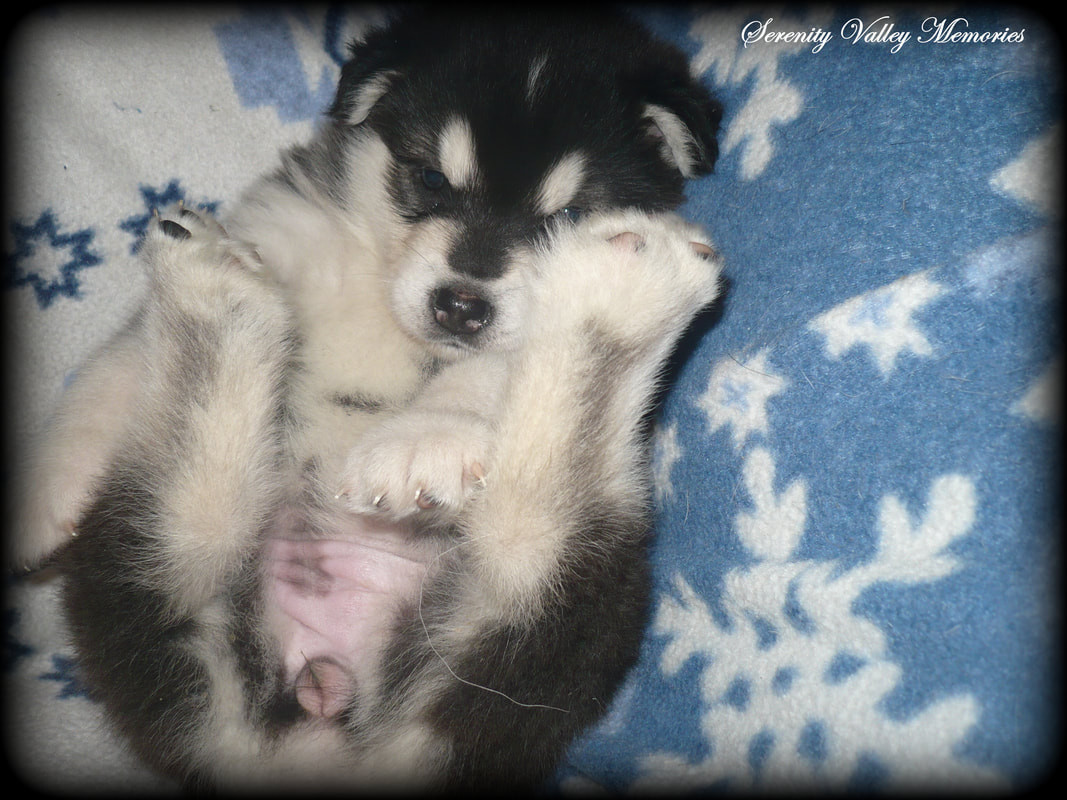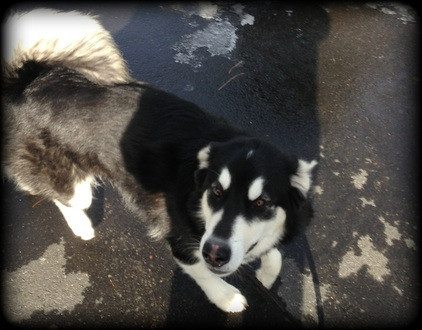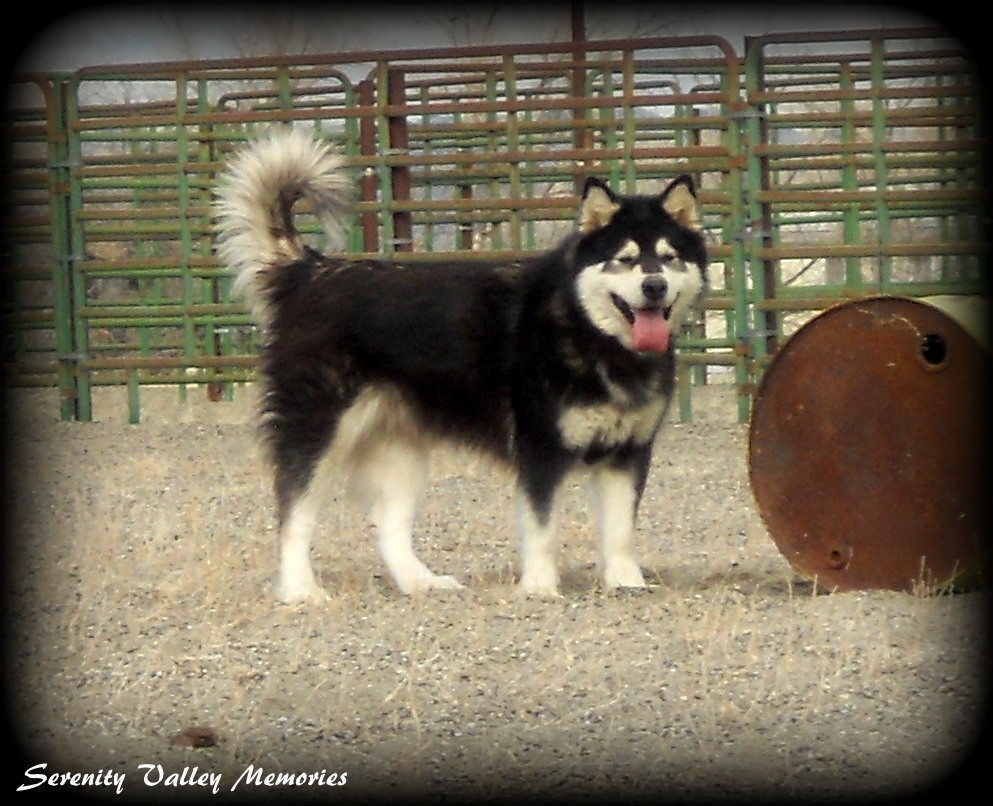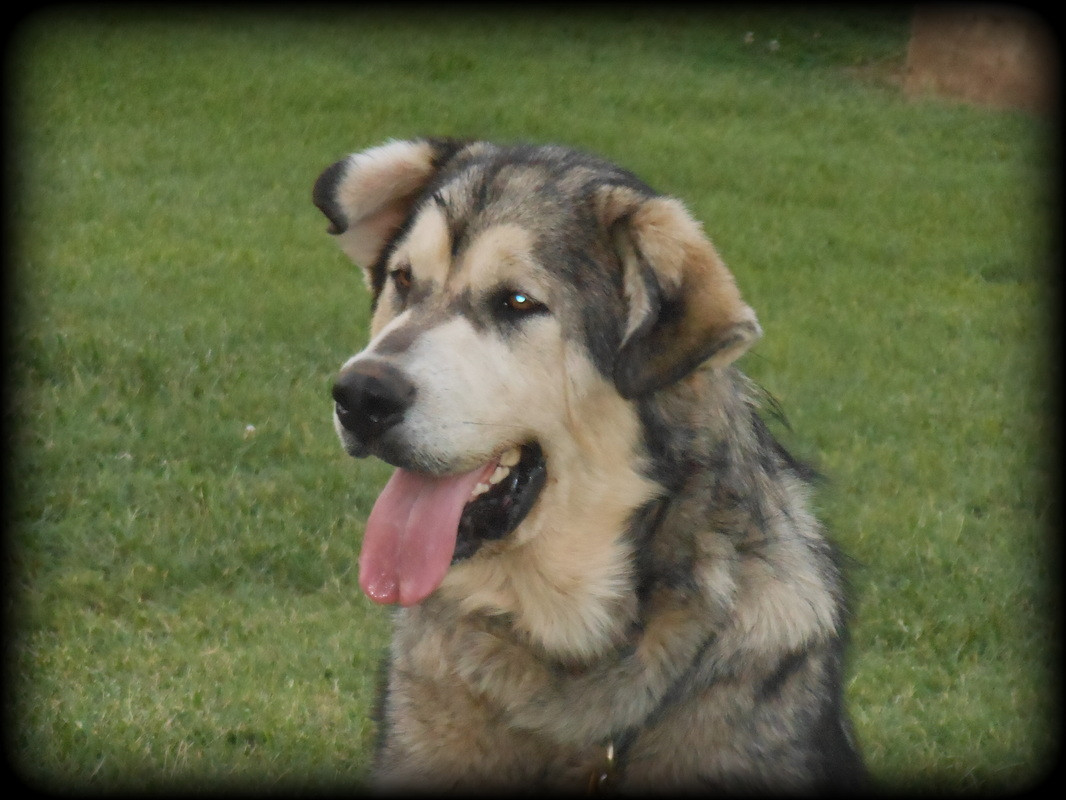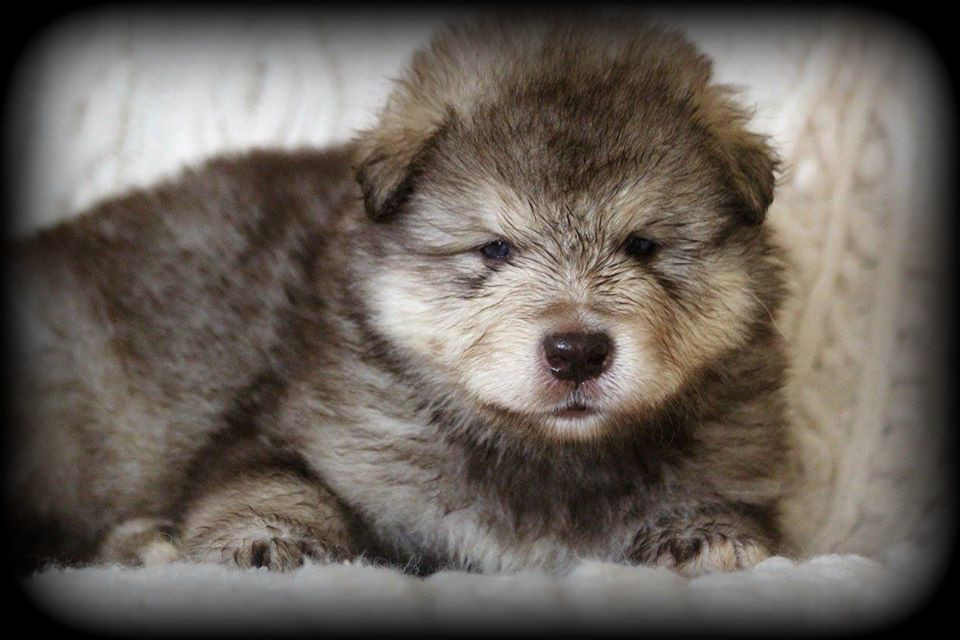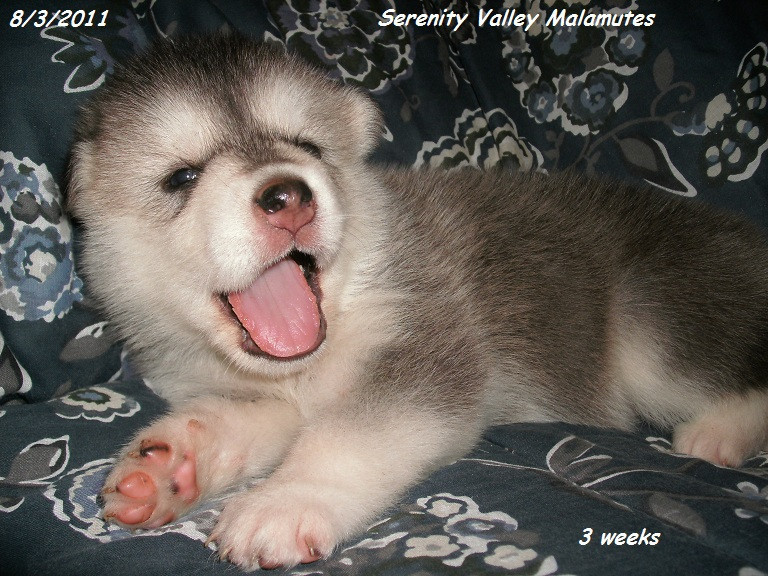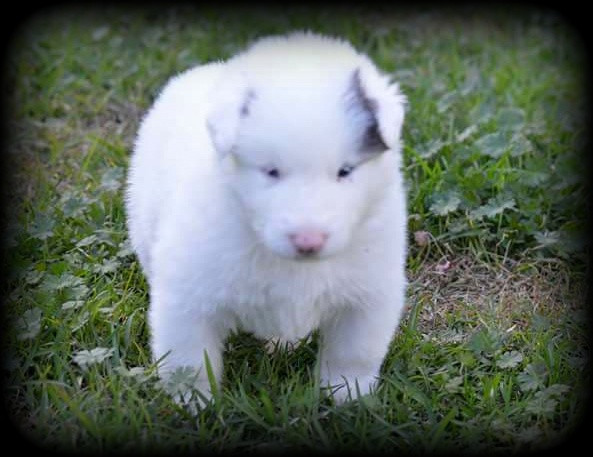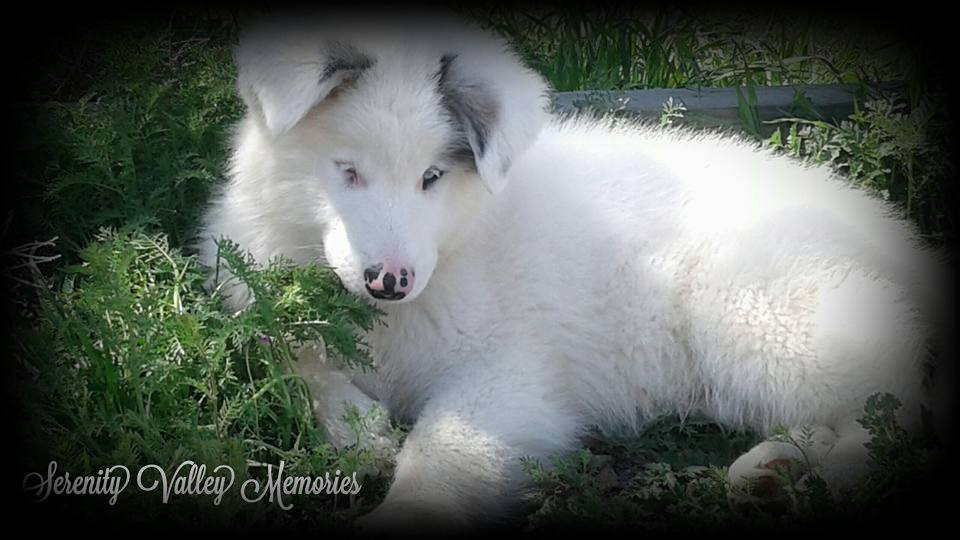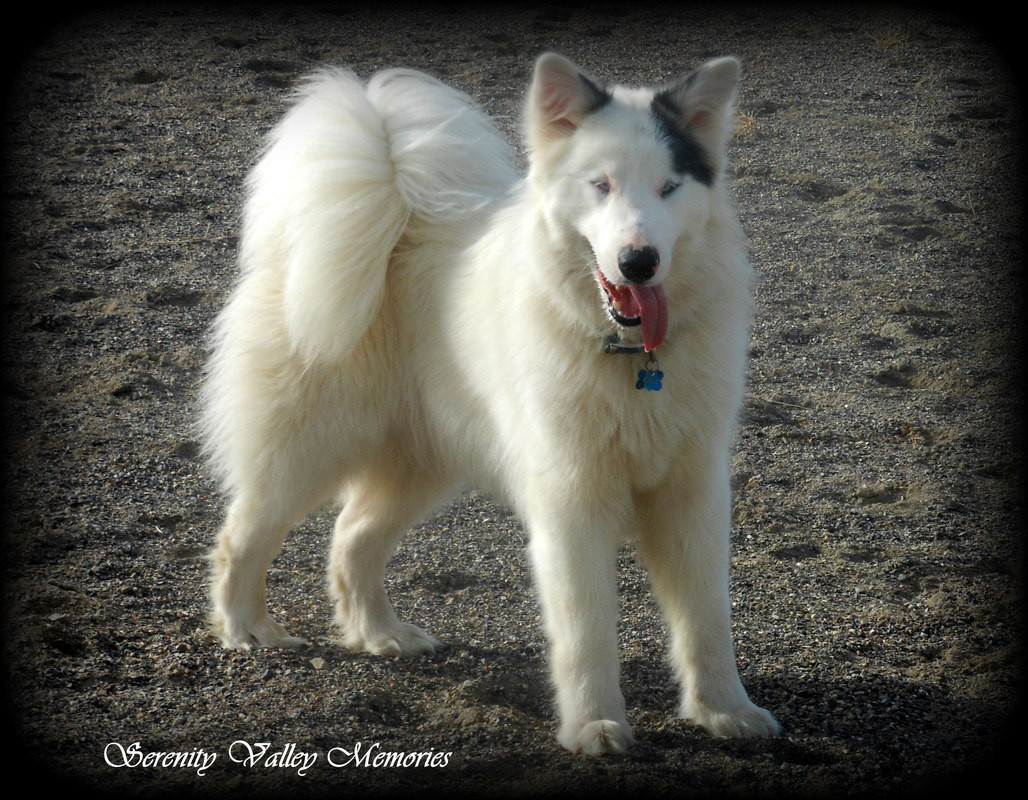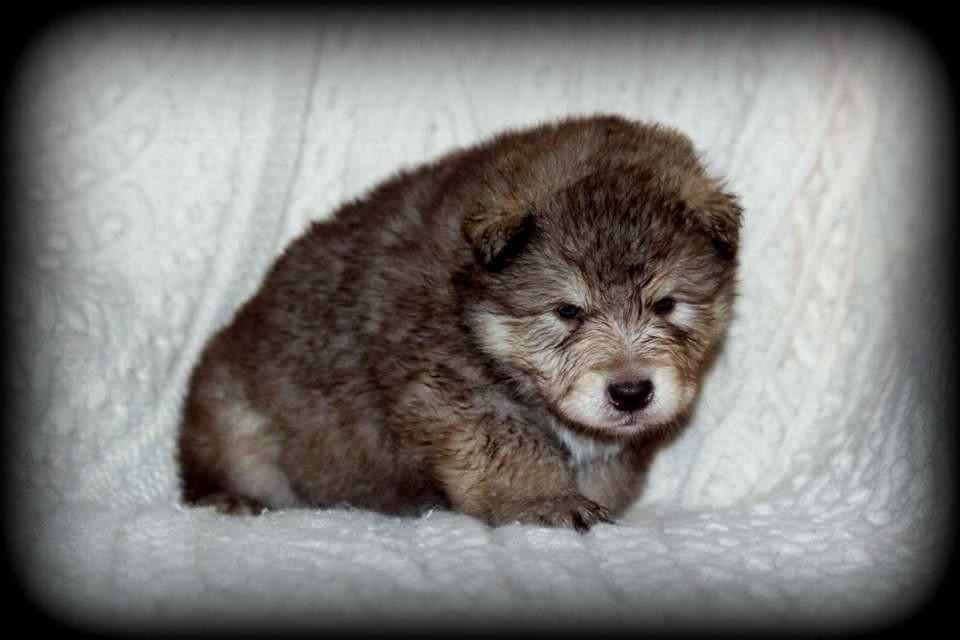Copyright 2007-2025 by Serenity Valley Malamutes & Serenity Valley Memories
serenityvalleymalamutes@live.com
Do not duplicate anything on this website without permission.
Colours & Patterns of the Alaskan Malamute
This page is to explain the colours, patterns, and markings of the Alaskan Malamute. There is a lot of misinformation between colour and patterns, which I hope to clarify. First, Seal and Agouti are PATTERNS, not COLOURS. The genes behind them determine only where the colour appears. Examples will be provided below.
Colours & Patterns
of the
Alaskan Malamute
A special note regarding colours & patterns
Some colours and patterns are not seen as often as others. Some breeders would call them rare in order to charge a higher price. While it may be true that some colours and patterns are "rare", I charge the same price for all puppies in a litter. I do not charge more for colours or patterns others would call "rare". In saying that, this page is simply for those who wish to understand colours and patterns more in-depth. Rare or common, I find all of the genetics fascinating! Please click HERE for more info on pricing scams and how to avoid them
Black/White Malamutes have Black guard hairs with a Black or Dark Grey undercoat. The hairs of the guard coat are solid in colour from tip to root
Black/White
Black/White
Some breeders use the term "True Black" to describe the "Closed Face" blacks. I find this to be fairly inaccurate as black is black. The only genetic variations to Black is Black Agouti, Black Seal, and Black Sable (please see Agouti and Seal below for examples - I have not yet owned or produced a Black Sable)
Regardless of their masking, you can tell a Black puppy apart from a Black Seal at an early age by looking at their sides. Black puppies will have very consistent colouring over their back and sides. Black Seal puppies have a darker stripe down their back and lighter sides.
Grey/White Malamutes have a Grey top coat with a light grey or off white undercoat. Some can appear quite dark, almost black, down to a very light grey
The only genetic variations to Grey is the following Patterns: Grey Agouti, Grey Seal, Grey Sable (please see Agouti and Sable below for examples - I have not yet owned or produced a Grey Seal)
Grey/White
Grey/White
Sable/White Malamutes have both Black and Red factors. In Black, Grey, and Blue Malamutes, this shows up as a red to cream colour in their coat, especially around their ears and on their sides.
When a Mal has some Sable colouration, but not enough to be considered "Sable" - this is typically referred to as "Sable Points" - I have also seen this referred to a "Mild Sable". When a malamute has "Sable Points", they are usually registered as their primary colour. For example, a Black/White with Sable Points would be registered as Black/White. When a Mal has equally, or nearly equal base colour and sable points, then they are registered as Sable. This is more common with Grey, but can occur with Black as well.
I have not yet had nor produced a Sable, but if you look above at the other colours, you can see examples of Sable Points.
Sable/White
Sable/White
Red/White
Red/White
Red/White Malamutes have a Red top coat with a red or white under coat. Pigment is "liver" with no black evident. The Red can range from light to dark. Dark Red is often called Mahogany, however, these are two different colours.
The only genetic variations to Red is the following Patterns: Red Agouti, Red Seal, Red Sable
(I have only had Mahogany Mals and pups. Red and Mahogany can look similar, so seeing the Mahogany pups and dogs will give a good idea. Reds do not have the 'chocolate" tint to their colour)
PHOTOS COMING SOON
Mahogany/White
Mahogany/White
Mahogany/White Malamutes have a "chocolate" look mixed into their top coat colour. Their under coat ranges from dark to light Mahogany to white. Mahogany can range from dark to light and should not be confused with Dark Red.
The only genetic variations to Mahogany is the following Patterns: Mahogany Agouti, Mahogany Seal, Mahogany Sable
Blue/White (Dilute Black)
Blue/White (Dilute Black)
Blue/White Alaskan Malamutes are effected by a diluting gene, which stacks with the Black or Grey gene. Their colour is "washed" out, giving them a dull, slate blue appearance. Their pigment is also effected, taking on a slate appearance, instead of crisp Black. Their under coat ranges from "blue" to white.
(I have not had, nor produced a solid point blue)
The only genetic variations to Blue is the following Patterns: Blue Agouti, Blue Seal, Blue Sable, "Wolf" (dilute wolf grey)
Lilac/White (Dilute Red)
Lilac/White (Dilute Red)
Lilac/White Malamutes are effected by the same gene as "Blue" Malamutes, except it stacks with the Red or Mahogany gene. The Red or Mahogany takes on a lighter, washed out look, their pigment is washed out or pale looking, and their eyes are a lighter, almost yellow. Given the wide range of light to dark with Reds and Mahogany, it can be difficult to tell a Non-Lilac from a Lilac. Because of this, they are actually considerably more common than people realise.
(I have not had, nor produced a solid point blue)
The only genetic variations to Lilac is the following Patterns: Lilac Agouti, Lilac Seal, Lilac Sable
Silver/White
Silver/White
Silver/White Malamutes have a light Grey top coat with a White under coat.
I have yet to own or produce a Silver/White
PHOTOS COMING SOON
Solid White
Solid White
Solid White malamutes have a White top coat and under coat with no other colour present. In many cases, White Malamutes can appear to have a light cream colour to their coat. All Malamutes get this, it is just more obvious on Solid Whites. Some choose to use a whitening shampoo to clear this up.
White Malamutes can display Black factoring, Red factoring, and Dilute factoring in their pigmentation.
Patterns
Patterns
Many people think Agouti and Seal are colours, when in fact, they are patterns. They do not effect the colour in any way, only where the colour appears. Agouti and Seal can effect any colour, except Solid White.
Agouti
Agouti
BLACK SEAL - First two are the same pup at different ages
BLACK AGOUTI - Same pup at various ages
Solid Point
Mahogany Seal
Wolf Blue
Blue Seal
Blue Agouti
Colours & Patterns
of the
Alaskan Malamute
First one is Grey Sable, all others are Grey Agouti. The last three are all the same pup
Blue Seal Point Sable
Lilac Sable
Lilac Seal
Lilac Agouti
Wolf Grey
Wolf Grey
Wolf Grey pups have both Black and Grey guard hairs. Undercoat is a shade of Grey. Grey's can have some scattered black hairs throughout their coat, and Seal can have some Grey hairs, especially as puppies. Wolf Grey is an even distribution of Black and Grey hairs. The hairs are usually solid coloured, not tipped like Seal.
I have only had one Wolf Grey, who's colour was diluted. Unable to find any other name for this, I have referred to it as "Wolf Blue" - She had beautiful light and dark blue hairs, giving her a stunning coat! I hope to someday produce another!
Agouti is a beautiful patterning on the hairs of the top coat. Agouti can present in any colour as it only effects Where the colour appears on the hair. It does not effect the actual colour. Agouti hairs are banded with multiple colours. For example, for a Black Agouti, the individual hairs of the top coat would be Black (at the top, furthest from the body), Cream to Red band in the middle, and then Black to Grey at the base. In reds, all three bands are red, but the middle band is noticeably lighter.
Seal
Seal
Seal (also known as Alaskan Seal) can also effect any colour as it only effects where the colour is located on the hairs. The Seal pattern means the hairs on the top coat are 2 colours. This will always be the top portion of the hair being coloured, and the bottom portion being White. The under coat is typically a lighter colour to white. For a Black Seal, the under coat is more likely to be light grey to white, instead of Dark Grey seen with "Solid Point" Black. "Solid Point" meaning the hairs are one solid colour. While Seal can occur with any colour, if you see a Mal being referred to or registered as "Seal" this means Black Seal. Also, the main colour still has its natural range of light to dark and some Mals can appear darker at a distance.
White Spotting / Splash
White Spotting / Splash
White Spotting is a very unique gene. It is often referred to as "Splash Coat" or "Pi-bald" - the simplest explanation is that is creates White where colour would normally be. This can be very mild, or extreme. Some mild examples include the common "Withers Spot" - also I think it is important to note, Half Collar and Full Collar markings are also due to the White Spotting Gene. With smaller white marks, such as a Whithers Spot, it is generally not considered enough of a mark to call a Mal a "Splash Coat", but I feel it is still important to understand that it is still caused by the same Gene. The White Spotting gene fully removes pigment from random areas of the body. This removal of pigmentation is also what gave Titan (the mostly white boy below) his blue eyes. They were not the traditional blue, such a Siberian Husky might have, but rather a lack of pigment from the White Spotting Gene. His Black Seal grandson also had effected eyes. They are a pale gold, instead of dark brown.
When Genes Collide
When Genes Collide
Genes have this funny way of doing what they want at times. Usually, this is seen as variation in a repeat breeding. For example, I paired Maveryck and Storm twice - Once in 2011, and again in 2012. In 2011, the litter produced Blue, Agouti, and Black Seal. In 2012, the litter was Blue, Agouti, Solid Point Black. This is a prime example of Genes doing their own thing. You could pair the same 2 dogs 5 times, and get 5 different outcomes.
Now, less common, Genes will mix in a way that can be mind blowing. I had been trying for years to find the right gene combination to produce something very special. In 2018, I was finally successful. All three genes (White Spotting, Agouti, Diluting) mixed perfectly, and Nuggs was born! A stunning, breath-taking Blue-Agouti Splash Coat. He went on to have a mini me daughter and granddaughter. I hope to be able to produce this stunning combination again in the future!
Markings
Markings
Here's a small breakdown of some of the common Malamute markings
Black Agouti Mask - Baby and Grown
Standard full mask
Open Face (no goggles or nose bar)
Black Closed Face - Baby and Grown
Forehead stripe or 'clover' - goggles but no bar
Black Closed Face - some don't keep the really heavy markings
Full head stripe
Grey Agouti Closed Face - Baby and Grown
Red Agouti Closed Face - Baby and Grown
Full mask turning into cap and bar with no goggles
916.514.5029
serenityvalleymalamutes@live.com
